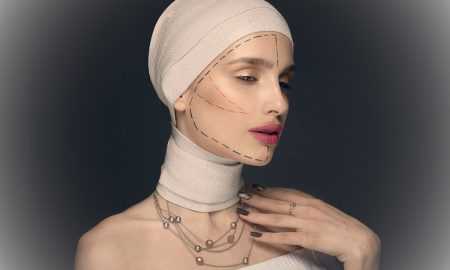Dr. Nianda Reid is a board-certified dermatologist, who specializes in medical and cosmetic dermatology, including the use of cosmetic injectables and laser dermatology. Dr. Reid graduated from the University of Rochester School of Medicine and Dentistry and obtained a dual degree M.D./M.B.A in Health Care Management from the University of Rochester Simon School of Business. She then completed her Dermatology training at Brown University in Providence, Rhode Island where she served as Chief Resident in her final year. Her extensive background and training have given her a wealth of experience in treating various dermatologic conditions.
 Photo Credit: Shutterstock
Photo Credit: Shutterstock
Are you irritated by the ingrown hairs on your skin? Let’s talk about why they exist. Here Haute Beauty expert Dr. Nianda Reid gets down to the core root of why ingrown hairs appear in the first place. Here’s what she had to say:
What are ingrown hairs?
Ingrown hairs or medically termed pseudofolliculitis, can arise when the hair becomes plugged with debris within a hair follicle leading to inflammation under the skin. It can cause irritation or bump on the skin that can become tender, itchy or cause a sore filled with sebum better known as an ingrown hair.
What is the main cause of ingrown hairs?
Anyone can get ingrown hairs but they are more common in people with coarse or curly hair. Ingrown hairs are most often on the posterior neck, occluded areas such as the axillary skin and groin areas, as well as the face and neck.
In some areas where the hair has been removed by shaving, waxing or plucking, we can see "razor bumps" that start to appear as the hair begins to grow back. The repetitive nature can lead to pigmentation or discoloration or even scarring. There are many different ways to treat ingrown hairs depending on the cause and location.
 Photo Credit: Shutterstock
Photo Credit: Shutterstock
Are there ways to prevent ingrown hairs? Does shaving cause ingrown hairs?
Ingrown hairs can be precipitated by hair removal options such as shaving, waxing or plucking. It may be helpful to apply shaving gel prior to shaving to reduce friction and inflammation. If shaving, avoid close shaves and shave in the direction of hair growth. An electric razor or clipper may be less irritating than a blade for most people.
It may be helpful to wash or gently exfoliate the area to remove ingrown hairs. If possible use sterilized tweezers to remove any embedded hair that may be trapped and causing irritation.
Is it bad to try and pop your ingrown hair?
Popping or squeezing is never recommended as this will increase your risk of infection and complications associated with ingrown hairs. If you develop a bump that is painful or an infection that does not resolve please see your medical provider.
What is the best thing to do at home when you have ingrown hair?
Other hair removal options like depilatory creams and/or prescription creams can help reduce hair regrowth. Don't forget to apply a soothing moisturizer post-shaving or hair removal to help restore moisture and help with your skin's barrier repair. Another great option is seeking help from a professional with laser hair removal treatments. If you have a history of recurrent ingrown hairs or you think you have a skin infection, please see your medical provider for an evaluation.























